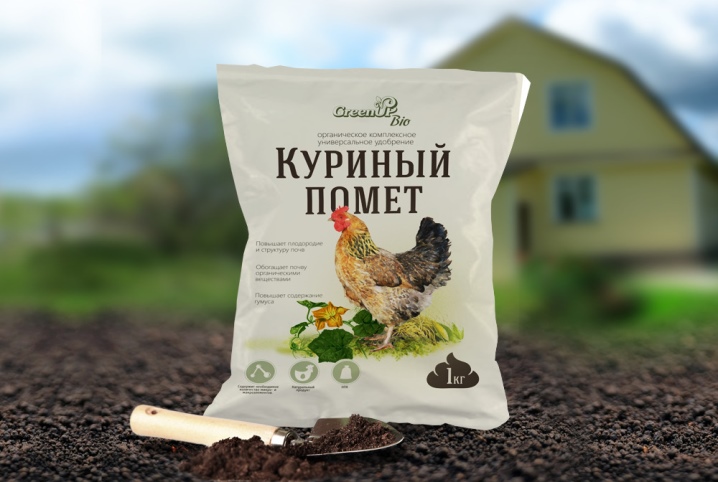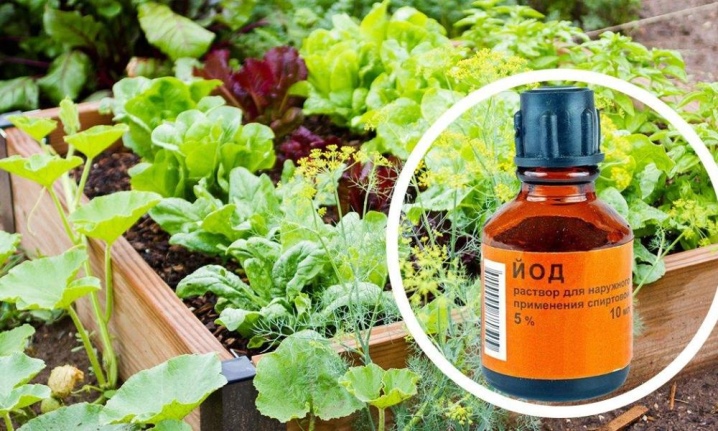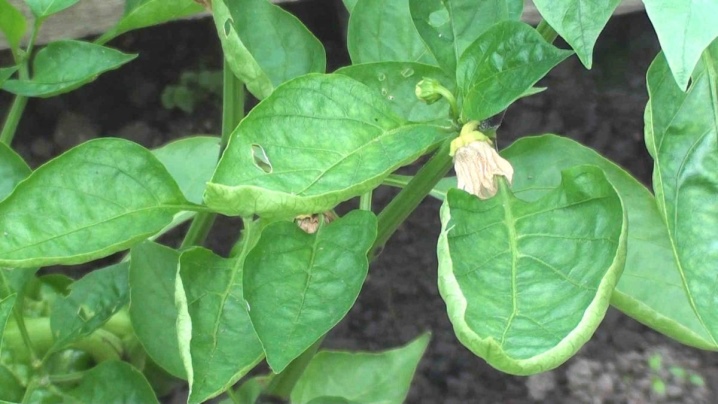How to pour pepper to grow better?

A pepper's yield and healthy appearance depend a lot on whether it's getting the right amount of nutrients. In order for this plant to be strong and healthy, it must be fed at all stages of development.
What fertilizers should you use?
For feeding peppers, both mineral and organic fertilizers are used. The poorer the soil on which the crop grows, the more often the gardener will have to feed the plants.

Mineral
Such dressings work quickly and immediately. According to their composition, they can be divided into three main groups.
- Potash. The most popular fertilizers are potassium sulfate and potassium magnesium.
- Phosphoric. This includes simple and double superphosphate.
- Nitrogen. The most famous fertilizer from this group is urea.

And also there are mineral supplements in the form of complexes, enriched with a large number of various microelements.
Organic
Natural fertilizers are more popular among gardeners. They are affordable, effective and do not harm either plants or people. Most often, organic fertilizers such as compost, chicken droppings, and green manure plants are also suitable for plant nutrition.

Mineral and organic dressings can be alternated. In this case, the plants will always receive everything they need to grow.
Top dressing with folk remedies
In order for the pepper to grow better, you need to use time-tested solutions for watering it. There are many fertilizer recipes that are suitable for feeding peppers at different stages of growth.
Bird droppings
Only fresh droppings should be used. In order not to harm your plants, it must be diluted in warm water in a ratio of 1 to 20. The solution should be infused in a warm place for 24 hours. Once the product is ready, it can be used to water the plants. Pour the liquid directly under the root. The use of poultry droppings for feeding bushes significantly accelerates their growth.
It can be used immediately after planting seedlings in open ground.

Ash
This is another popular fertilizer that is often used to feed bell peppers. It can be used to fertilize bushes both in greenhouses and in garden beds. Preparing a solution with wood ash is very simple. Add 5 tablespoons of dry product to a bucket of warm water. After that, everything is thoroughly mixed. You can use the resulting solution immediately after its preparation.

A solution with wood ash is great for speeding up the growth of bushes that are grown in greenhouses. If the pepper is stunted due to lack of sun, this product will help solve the problem.
Milk
Like eggshells, milk contains a large amount of calcium, which is easily absorbed by plants. It is very simple to prepare a milk solution for watering bushes. You just need to dilute low-fat milk with water in a ratio of 1 to 5. You do not need to insist on it.
Use raw milk only. Heat treatment significantly reduces the benefits of the fertilizer.

Herbal infusions
To fertilize the plants, you can use any herbs that are found on the site. You can prepare an infusion from dandelions, woodlice, nettles, plantains. The herbs need to be finely chopped, then covered with warm water. You need to insist on this product for a week. After that, the resulting solution must be used for watering.Under each bush, you need to pour 1 liter of the product. Such feeding is beneficial for both young and adult plants.

Iodine
Adding iodine to plant watering solutions stimulates plant growth, increases yields and even improves the taste of the fruit. To prepare the solution, it is enough to dissolve only 2-3 drops of an alcoholic tincture of iodine in one liter of water. You can use the product for watering immediately. In some cases, whey is added to the liquid. This only increases the effectiveness of the product.

Banana peel
The banana peel solution saturates the soil with potassium. For its preparation, the skins of several bananas are poured with three liters of warm water. The solution is infused for 4 days. Before use, the solution is diluted with water in a 1 to 1 ratio.

Onion peel
This is another budget and effective drug. It is excellent for plants that have slowed down their growth. Preparing the infusion is very simple. A handful of onion husks are poured with a liter of boiling water and infused from several hours to a day. Watering with such a solution allows you to accelerate the growth of seedlings and make the stems thicker.

In addition, onion peels perfectly protect the garden from fungal diseases and various pests. Therefore, if after watering the bushes there is a little broth left, they can be sprinkled with tomatoes or cucumbers growing nearby.
Yeast
For plant fertilization, both dry yeast and fresh yeast are used. This product contains a large amount of nutrients. Yeast tincture allows to accelerate the growth of bushes and stimulates the development of the root system.
A fresh yeast-based solution prepares quite quickly. A kilogram of yeast is diluted in 5 liters of warm water. After that, the product is sent to a warm place for a day. Before use, the infusion must be diluted in 5 buckets of clean water. You can water them with peppers that have stopped growing or develops too slowly.

Dry yeast supplements cook faster. A bag of yeast is diluted in a bucket of warm water. After that, 2 tablespoons of sugar are added to the solution. This product is infused for 2 hours.
The solution must also be diluted in warm water before use. You can use such an effective top dressing 2 times during the entire growing season. This will be enough to get a big harvest.

Features of the introduction
You need to feed the plants several times per season.
After planting seedlings
Young plants are planted in the ground 2 months after the first shoots of seedlings appear. If the soil is rich, and the pepper quickly grew, you can do without top dressing.
It is recommended to use 3 grams of superphosphate and 0.5 grams of ammonium nitrate dissolved in a liter of water for feeding young seedlings. The solution is applied immediately after preparation. They need to water the seedlings right at the root.

When feeding sweet peppers outdoors, it is very important to respect the proportions. If this is not done, the plants can start to hurt or even die. In order for the peppers to grow quickly and can resist various diseases, top dressing in June can be used 2 more times. The interval between watering should be at least a week.
During flowering
When the first ovaries appear on the plant, you can use superphosphate, potassium sulfate and ammonium nitrate. Most often, gardeners decide to feed bell pepper bushes with a solution consisting of 1 teaspoon of urea diluted in a bucket of warm water. At this stage, fertilization is best applied while watering the plants. This will protect the roots from burns.

Boric acid will also help speed up the process of flowering and the formation of ovaries. To prepare the solution, one teaspoon of the dry product must be dissolved in 10 liters of warm water. Water the plants immediately.
During fruiting
To accelerate the growth of fruits, many gardeners use a mixture consisting of 10 grams of saltpeter and 200 grams of wood ash.Immediately before watering, it must be dissolved in a bucket of warm water. Use the resulting solution immediately.
Also, pepper can be fertilized with a mineral mixture consisting of potassium salt and superphosphate, mixed in equal proportions. You need to dissolve the product in a bucket of water. The solution must be used carefully. No more than 1 liter of the composition is poured under one bush.

In order for the peppers to grow faster, they need to be given all the elements necessary for this. Determine the shortage or excess of chemical elements simply by the appearance of the plants.
- If the leaves begin to rapidly turn pale or yellow, this means that they lack nitrogen. This may also be evidenced by the small number of flowers on the bushes. If this situation is not corrected, the bush will soon fade.
- When the leaves begin to become covered with small gray-yellow specks and curl up into a tube, they need to stop feeding them with potassium and nitrogen.
- An excess of calcium in the soil is evidenced by wilting and falling of leaves. For the same reason, the fruits grow very small.
- With a lack of boron, the leaves remain small and curl down over time. Over time, the bushes begin to stop growing, and the fruits fall off.
- Reddish or bluish color of the leaves indicates phosphorus deficiency. To remedy this situation, it is worth adding superphosphate to the soil.

Sometimes you can see signs of a deficiency of several micronutrients. In this case, the plants need to be fed with complex fertilizers. But here, too, you should not be too zealous. If the solution is too concentrated, the pepper will have an unpleasant bitter taste.
Fertilizers need to be applied to well-moistened soil. So the peppers will get all the elements they need faster. It is very important to pour water directly at the root.

Drops of the solution should not fall on the leaves. This can cause noticeable burns on the leaves of the peppers. Foliar dressing for pepper is never used. If you adhere to all the rules, use exactly those fertilizing that the plants need, then the peppers will grow quickly and delight gardeners with a good harvest.
For information on how to pour pepper, see below.













The comment was sent successfully.